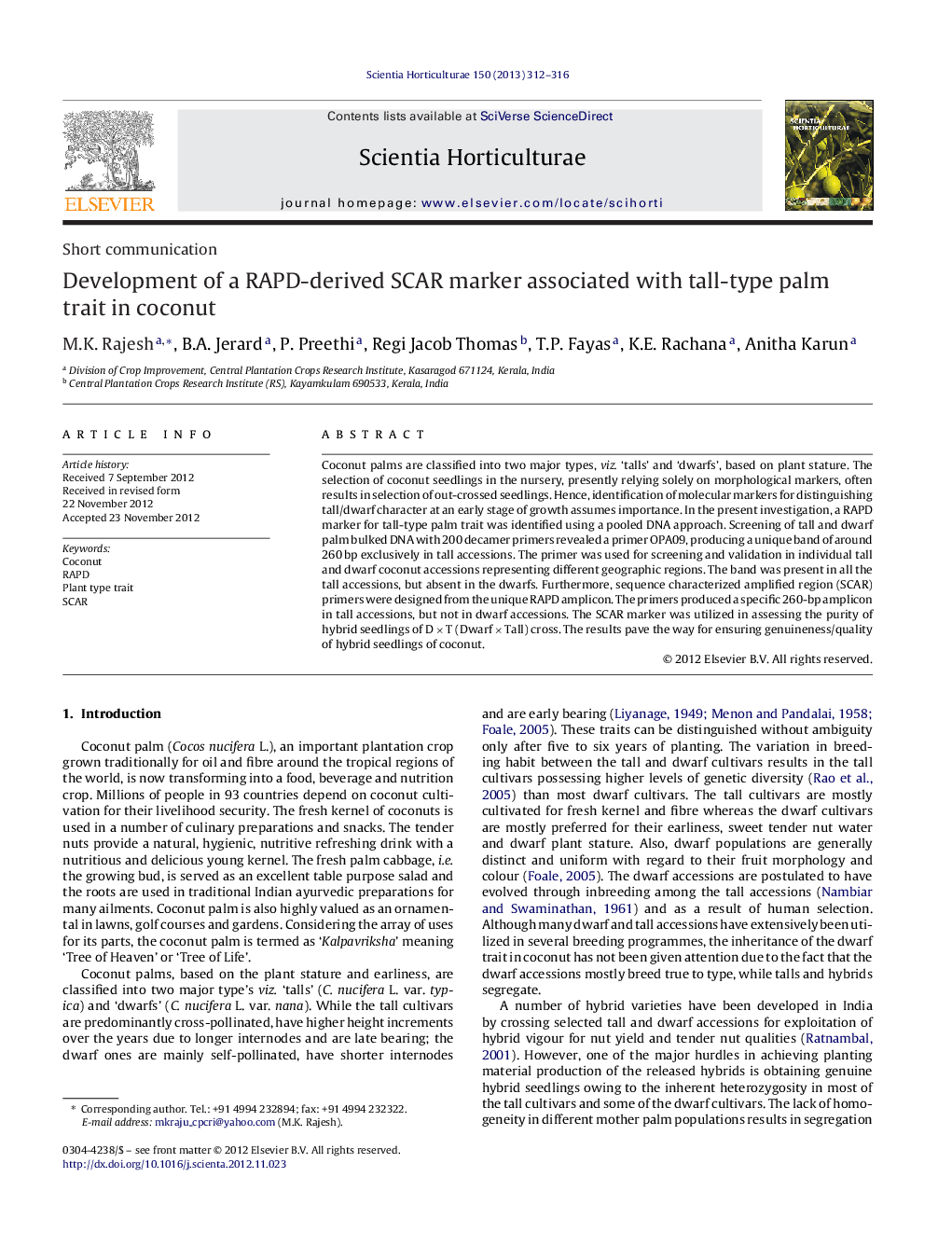| کد مقاله | کد نشریه | سال انتشار | مقاله انگلیسی | نسخه تمام متن |
|---|---|---|---|---|
| 4567286 | 1628848 | 2013 | 5 صفحه PDF | دانلود رایگان |

Coconut palms are classified into two major types, viz. ‘talls’ and ‘dwarfs’, based on plant stature. The selection of coconut seedlings in the nursery, presently relying solely on morphological markers, often results in selection of out-crossed seedlings. Hence, identification of molecular markers for distinguishing tall/dwarf character at an early stage of growth assumes importance. In the present investigation, a RAPD marker for tall-type palm trait was identified using a pooled DNA approach. Screening of tall and dwarf palm bulked DNA with 200 decamer primers revealed a primer OPA09, producing a unique band of around 260 bp exclusively in tall accessions. The primer was used for screening and validation in individual tall and dwarf coconut accessions representing different geographic regions. The band was present in all the tall accessions, but absent in the dwarfs. Furthermore, sequence characterized amplified region (SCAR) primers were designed from the unique RAPD amplicon. The primers produced a specific 260-bp amplicon in tall accessions, but not in dwarf accessions. The SCAR marker was utilized in assessing the purity of hybrid seedlings of D × T (Dwarf × Tall) cross. The results pave the way for ensuring genuineness/quality of hybrid seedlings of coconut.
► Pooled DNA of tall and dwarf coconut palms was screened with 200 RAPD primers.
► Primer OPA09 produced a unique band of around 260 bp exclusively in tall palms.
► This RAPD marker was converted into a SCAR marker.
► This marker would ensure varietal purity in hybrid planting material production.
Journal: Scientia Horticulturae - Volume 150, 4 February 2013, Pages 312–316